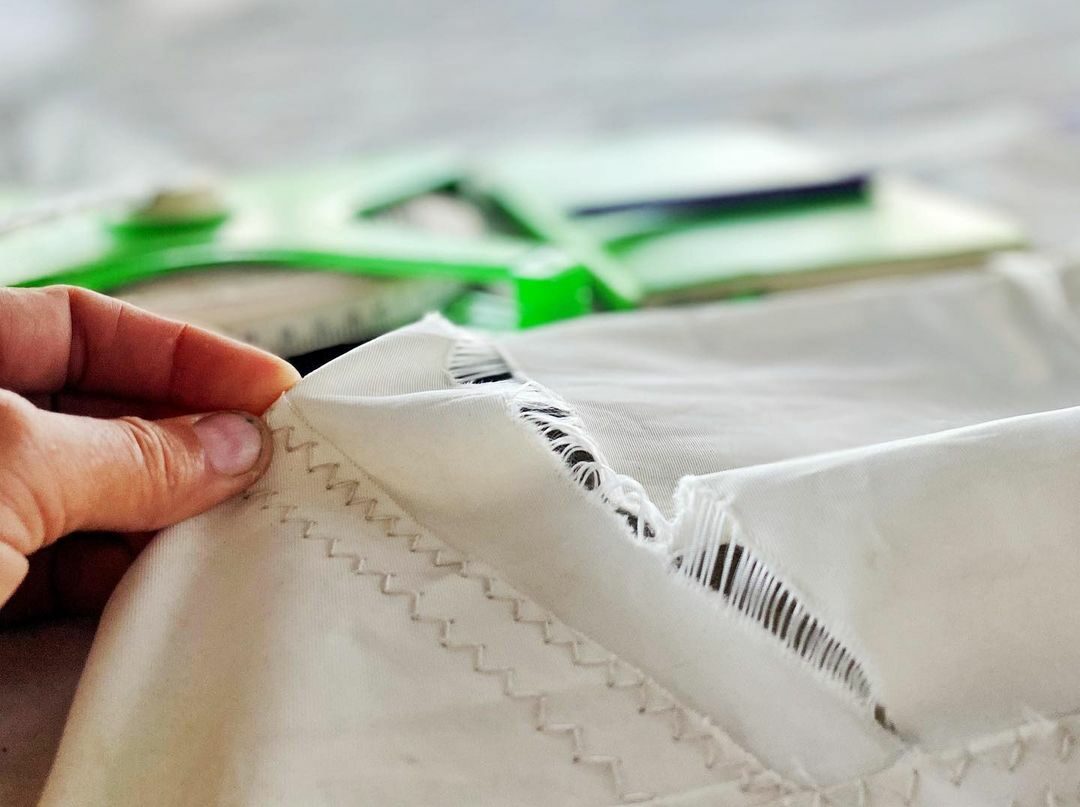Checking the condition of your sails is a major component of regular maintenance. It can prevent small issues from becoming larger disasters in the future. And when purchasing a boat can inform you about the upkeep and age of the sails from the prior owner. Unfortunately, it is probably one of the more mundane tasks during an annual inspection but nonetheless important. Here are some suggestions for things to look for:
- Attachment points – Pay careful attention to corner attachment points, bolt rope, hardware, and reefing systems. If you see any chafe or damage, check for severity and need for repairs.
- Sail edges – Checking the entire perimeter can tell you if there is any stretching, misshaping, or suffering from UV damage.
- Sail shape – When your sail is pulled taut, see if you notice any stretching. You can use your halyard to stretch the luff, this will let the sail flatten and pull the draft forward. You are going to be looking for any sections of the sail that appear “baggy” or “stretched out”. When sails stretch the draft will become more full than originally designed, causing a loss in sail shape even when tensioned properly.
- Stitching – UV damage typically effects the stitching of the sail before the cloth. If you notice any stitching fraying, check closely to see if there are other stitches that will need repair. You can learn about checking and preventing UV Damage here.
- Holes – Sails can develop small holes or short tears which can begin to grow larger. Depending on the damage these can easily be repaired by sewing or placing sail repair tape over the hole. Applying spreader patches that were supplied with your sail (or purchased elsewhere) are your best bet to counter damage from your sail rubbing against your spreaders.
- Creases and folds – These are places that are prone to damage as the continued bending can break down the fibers and stitching of your sail. It is important to fold and store your sails correctly to protect them from wear and tear.
- UV Protection – You should expect some ultraviolet damage as a normal course of sailing. If the exposure is too great, you will need repairs at best and possibly a new sail. Learn more about preventing and repairing UV damage here.
- Smell – Don’t be afraid to use your nose to detect mold or fungus. The pungent or musty smell of mildew, mold and fungus are easily determinable by smell when not visible. Learn to remove mildew, rust and dirt stains.
- Winches – The ratchets should be audibly clicking rapidly and sharply. If you notice any drag, have them checked. Marine service companies recommend servicing your winches at least once or twice during the sailing season. Luckily there are a plethora of videos on YouTube about servicing winches if you are into DIY or want to save a few dollars.
- Halyards – Be sure these are still running smoothly. If your boat has been out of use, the rollers/sheaves can stiffen and possibly seize up on you.
- Accessories – If it connects to the sail, look it over. That should include everything from draft stripes, batten pocket tension systems, control-line pockets, to cleats and sliders. Check slide attachments, corner reinforcements, headboard, clew and tack cringles.
For more information check out our blog post, Maintaining your sails and prolonging their lifespan.



